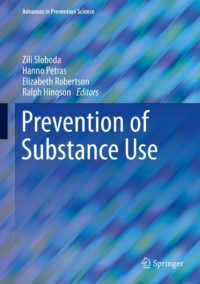iTRAC Emotion Regulation + Substance Use Prevention
Klein Buendel Investigators, Ms. Julia Berteletti and Dr. W. Gill Woodall, are collaborating with Dr. Chris Houck from Rhode Island Hospital and Dr. Stephanie Parade from Brown University on a new 5-year project to integrate substance use content with iTRAC emotion regulation material to reduce substance use among child welfare involved youth. The web-based intervention is being developed and evaluated in partnership with the Rhode Island Department of Children, Youth, and Families.
Nearly 700,000 children experience maltreatment each year, and youth with a maltreatment history are at heightened risk for substance use across the lifespan. Emotion regulation is a modifiable mechanism underlying the impact of maltreatment on risk behaviors but is often impaired in youth with a maltreatment history due to the neurotoxic effects of early trauma/neglect and inconsistent modeling of adaptive emotion regulation strategies. Emotion regulation is related to substance use in adolescence, and interventions to support the development of adaptive emotion regulation in youth with a maltreatment history have outstanding potential to interrupt trajectories of risk and prevent substance use. However, youth with a maltreatment history often face structural and psychosocial barriers to engagement. Furthermore, the child welfare system, which is designed to protect and support youth with maltreatment histories, is under resourced and often unable to meet the critical needs for prevention in this population. Interventions targeting substance use with this population must be acceptable, easily accessible, and low resource for the child welfare system.
During the Planning and Intervention Enhancement Phase (R61), the investigators will interview adolescents, caregivers, and child welfare professionals to obtain diverse perspectives regarding the integration of emotion regulation and substance use. They will create and program this content within the iTRAC framework, followed by acceptability testing to ensure usability and understanding. Upon completion of Phase 1, the team will begin Phase 2 (R33), during which a Stage III real-world efficacy (hybrid efficacy-effectiveness) trial of 200 youth with maltreatment histories will evaluate the iTRAC for Substance Use (iTRAC-SU) intervention.
Phase 1 – Planning and Intervention Enhancement (R61) Specific Aims
Aim 1: To create and integrate digital content linking substance use with ER into existing iTRAC modules. Information gathered via qualitative interviews with adolescents, caregivers, and staff in the child welfare system will be used to develop the substance use content.
Aim 2: To assess acceptability and usability with 10 adolescents (representing diverse backgrounds) over two iterative rounds of feedback.
Aim 3: To ensure successful completion of the Phase 2 Aims, planning activities with Rhode Island Department of Children, Youth, and Families. will take place to establish procedures for developing the workforce for the project, recruiting families, and avoiding interference by research in the critical mission of Department of Children, Youth, and Families programs.
Phase 2 – Randomized Trial (R33) Specific Aims
Aim 4: To conduct a randomized controlled trial examining the impact of the iTRAC-SU intervention on substance use relative to a waitlist control among 200 adolescents ages 12 to 15.
Aim 5: To examine iTRAC-SU relative to a waitlist control in enhancing theoretically important emotional competencies (such as emotion regulation, emotion recognition, distress tolerance) that mediate risk as measured by self-report, performance measures, caregiver report, and respiratory sinus arrhythmia.
Aim 6: To examine the feasibility, acceptability, uptake, and costs of iTRAC-SU when implemented with child welfare involved youth.
This research project was awarded to the Rhode Island Hospital by the Eunice Kennedy Shriver National Institute of Child Health and Human Development (DA059785; Dr. Chris Houck and Dr. Stephanie Parade, Multiple Principal Investigators). Collaborators include Ms. Julia Berteletti and Dr. W. Gill Woodall from Klein Buendel, and the Rhode Island Department of Children, Youth, and Families. The enhanced iTRAC modules will be designed and programmed by the Creative Team at Klein Buendel.


